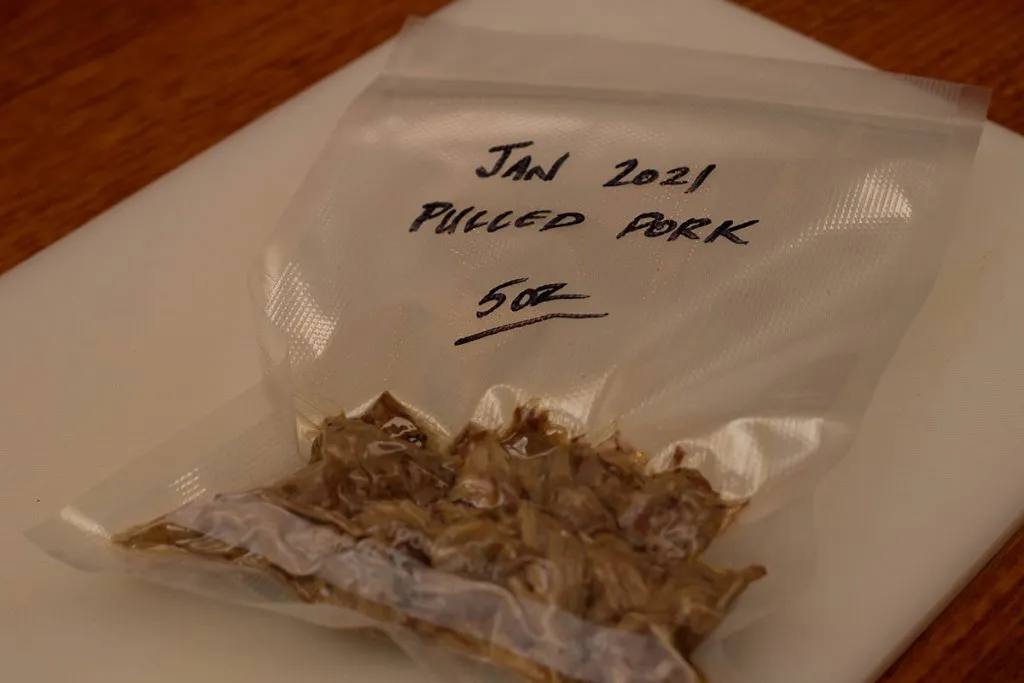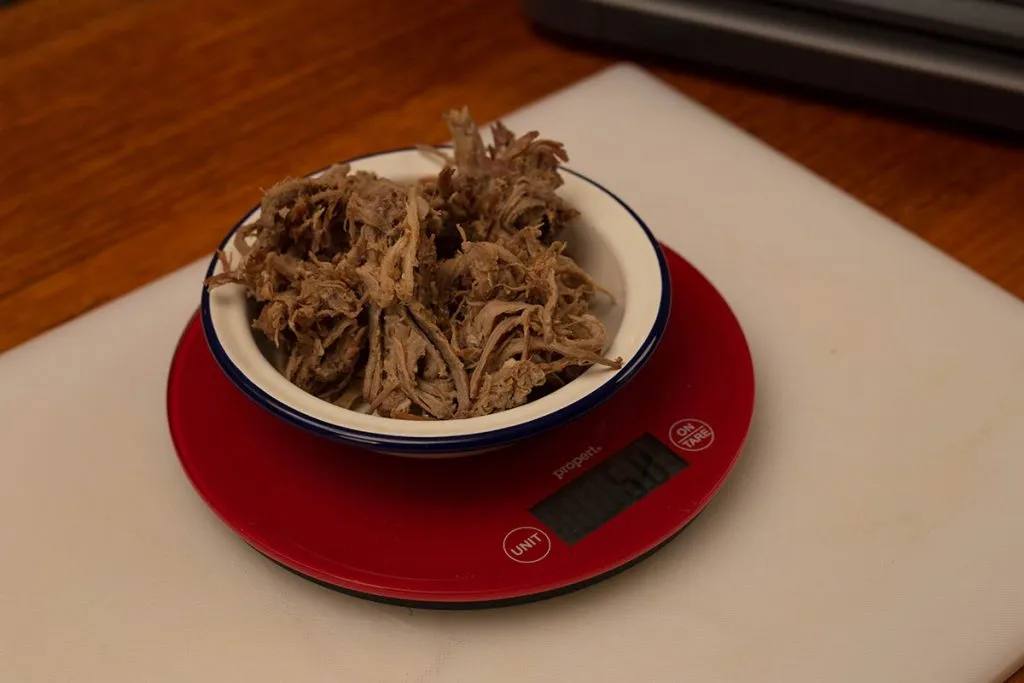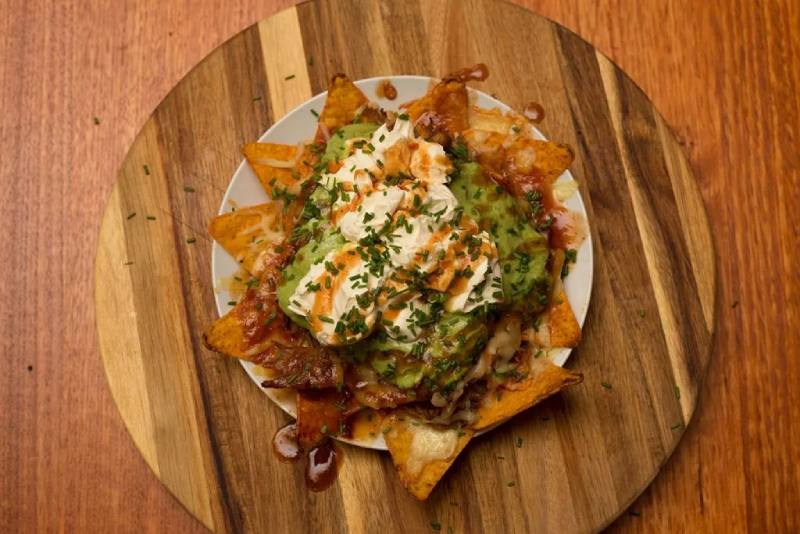Cooking “too much” pulled pork is easy, especially given that “too much-pulled pork” isn’t even really a thing.
Reheating pulled pork the next day, however, is a little harder and can often result in a disappointing dried out mess if not done correctly.
In this article, we’ll be looking at how you can store your leftover pulled pork, to keep it in peak condition, and the best way to reheat it to keep it as good, or possibly even better, as the day it was cooked.
The secret to reheating pulled pork without drying it out
The key to reheating pulled pork, and still having it be as juicy and delicious as the day it was cooked, is proper storage.
If you just want to know how to reheat pulled pork feel free to skip ahead, but in order to follow the best reheating method, you’ll need to store your pork properly.
If you are cooking your pork in advance, keep it in one piece and only shred it after you have reheated it.
By keeping your pork butt whole, you retain more moisture and avoid the dreaded dry-out commonly associated with reheated meat.
How to properly store pulled pork
If you have an overabundance of already pulled pork your best option is to vacuum seal it in individual portions.
I’ve been vacuum sealing most of my leftovers for the last few years. Not only does it preserve the food, but it also saves so much space in your freezer.

When you think of the containers you have and then storing food in them, they usually have excess air and space around them and it becomes a bit limiting on what you can fit in your fridge and freezer.
Vacuum sealing has stopped waste in my household. But more so it has changed our way of storing frozen goods. As soon as we get food home from shopping, I’ll portion it out, vacuum seal it and freeze it. We are finding that what used to fill our freezer from a normal shopping trip is only taking up half the space once all of that excess packaging is removed.
Vacuum sealers are now affordable and sold everywhere (we have a whole guide with all the best vacuum sealers here).

To save all the leftover barbecue food, all you need to do is allow it to cool completely before portioning out to vacuum seal.
If you are in a rush you can cool it down quickly by packing it into a watertight bag and burying it in an ice-filled cooler until it drops below 40°F.
How much pulled pork per portion?
Lots of people make the mistake of putting way too much food in one container for freezing and then when defrosting it, they realize they don’t need anywhere near the amount they have.
The smarter approach is to use some kitchen scales to weigh out equal portion sizes to accommodate your family.

If like our family you have some adult children who don’t always come home for dinner, then freezing individual servings for only one person or even two people, will stop any more wastage.
You can always grab an extra bag of frozen leftovers if needed.
The recommended serving size is roughly 5oz per adult, so effectively halve that for small children.
I weigh out all of my leftovers and then place them into individually sealed vacuum bags and write down the date, weight, and food in each bag.
There’s nothing worse than months later playing Russian roulette with a frozen bag of something, just because it wasn’t labeled.
You can definitely heat larger portions if you want to use fewer bags, just be aware that you may end up having more pork than you need when it’s time to reheat.
Reheating your pulled pork
We’ve all had reheated pulled pork that was dry. We have also heard loads of different methods for reheating without drying out including microwave, slowly raise its temperature, heat it in an oven covered, etc.
By sealing the pulled pork in a vacuum sealed bag, you have also sealed in the juices. Until that bag is cut, those juices cannot escape, here lies our problem, how to best reheat it to the perfect eating temperature.
You need one secret ingredient when it comes to reheating, and its name is boiling water.

Place a bag of vacuum sealed pork into boiling water and in 5 minutes you will have perfectly heated, succulent pulled pork.
It may sound way too easy and that’s because there are no tricks or gimmicks, just pop the unopened bag into boiling water and in 5 minutes you’ll be eating pulled pork like it was just pulled apart off the smoker.
Adjust this time for larger portions, if say you had double or triple the amount in the bag, you may need to reheat upwards of 10 minutes per bag.
Other ways to reheat pulled pork
We think the above method is best, but if you didn’t vacuum seal your pork, here are some other options:
1. Reheating pulled pork in the oven
Reheating your pulled pork in the oven is easy, simple, and probably the best way to reheat a lot of pre-shredded meat.
- Preheat your oven to 225°F
- Place your whole butt or shredded pork in an ovenproof dish and add in a little liquid to replace some of the lost moisture. This can be apple juice, cider vinegar, broth, or a thick BBQ sauce.
- Cover the dish in a double layer of foil, to lock in the moisture, and set it on a baking tray in the middle of your oven.
- Cook until your meat thermometer shows an internal temperature of 165°F.
- Once the meat reaches 165° F, crack open the foil and let the meat boil for a few minutes to add a little crunch back to the bark.
- If you stored your pork butt whole, you’ll need to shred it, after removing it from the oven, using a good pair of heat-proof gloves.
2. Reheat on the grill
Reheating pulled pork on the grill is best done using a 2-zone cooking method. This prevents the direct heat of the grill from drying out the meat.
- To create your 2-zone cooking area on a gas grill, keep one of your burners turned off while the other one is set to high.
- For a charcoal grill, pile your charcoal up on one side of the grill to create the hot zone.
- Bring the temperature of the hot zone on your grill up to the point that the cool zone, or indirect heat side, of your grill is at 225° F.
- Take your meat out of the refrigerator, remembering to make sure it has been thawed thoroughly if it was frozen, and wrap it in two layers of foil, adding in about ¼ cup of water to adjust for the moisture loss.
- If you are making BBQ pulled pork, coat the meat in the BBQ sauce before it goes into the foil.
- Place your pork package on the indirect side, or cool zone, on the grill until its internal temperature comes up to 165° F.
- Unwrap your meat, being careful to keep any juices left in the foil.
- Put the pork on the direct heat side of your grill to crisp it up. If you’ve already shredded it, it’s best to put it in a pan first.
- Remove the pork from the grill, shred it, add any remaining juices from the foil and serve.
3. Reheat in a crock pot (slow-cooker)
If you are strapped for time, or just feeling lazy, a crock pot is an easy set-and-forget way of reheating your pulled pork.
- If your meat is frozen, defrost it for 24 hours before reheating it in the crockpot.
- Set your crockpot to low heat or keep warm setting and add the meat to the pot.
- Add a splash of your favourite liquid, but don’t add too much, as crockpots do an excellent job of retaining moisture.
- The crock pot will bring the meat up to temperature after a few hours. Just make sure it’s reached the magic number of 165 °F to avoid any bacterial unpleasantness, and you are ready to go!
Reheating pulled pork with the Sous Vide method
Sous vide is a method of cooking by immersing the food in a hot water bath while it is inside a vacuum-sealed bag. You can use sous vide, which literally translates as ‘under vacuum,’ to cook your pulled pork right from the get-go and it’s a great way to cook beautifully tender meat.
You can buy sous vide machine, or you can use a large stove-top pot. Sous vide can also be used to reheat your pulled pork from frozen, which is excellent if you don’t have 24 hours of defrosting time.
The downside of the sous vide method is that you will need a vacuum sealer to store the pork.
Fortunately, they are widely available and not particularly expensive.
- Bring either your sous vide machine or a sizeable stove-top pot of water up to 165°F.
- Place the vacuum bags filled with pork into the machine/pot.
- Let the bags sit in the hot water bath for 45 minutes per inch of the thickness of the contents.
- If you are reheating your stored pork from frozen, leave it in there for an additional 30 minutes.
- You don’t need to worry about adding additional moisture because the bag is sealed and sous vide uses indirect heat to reheat your meat.
Can you reheat pulled pork in the microwave?
Although many pitmasters might sneer at the idea, you can reheat your pulled pork in the microwave.
It is probably the fastest method for doing so but, depending on how you stored your pork, you might have to decant it into a microwave-safe container first.
Many plastic wrappings, including some vacuum bags, contain chemicals like bisphenol-A (BPA) and phthalates. These chemicals are harmful to the human body and can leach out during the microwaving process.
If you are concerned, look for BPA or phthalate-free storage bags, use an FDA regulated microwave-safe container or just use a microwave-safe glass dish.
- After making sure your pork is in a microwave-safe container, cover it and cook on a medium to a low setting for a minute at a time until it reaches 165°F. This should only take a few minutes.
- If you notice the meat drying out, simply add a splash of liquid.
Reheating safety
One of the main concerns of reheating food, especially pork, is that it can become a breeding ground for bacteria.
As we mentioned, if you let your meat sit in the ‘Danger Zone’ of between 40°F and 140°F, bacterial colonies of Staphylococcus, Salmonella, and E. coli will double in size every 20 minutes.
The good news is that there are easy steps you can take to safeguard you food from bacterial growth.
Safe storage
The best way to keep your meat out of the danger zone is to chill it immediately after cooking. Obviously, you can’t put a freshly cooked pork butt straight in the fridge, but you can use the Wozniak Method.
The Wozniak Method was created by Mike Wozniak, pitmaster of the 2010 Kansas City Barbeque Society Team of the Year winners, QUAU.
Mike uses this method to quickly chill large pieces of meat left over from the dozens of competitions he enters, and wins, every year.
The Wozniak Method
- Once your pork butt has finished cooking, wrap it as tightly as possible in foil and pinch off the ends. You are trying to make as tight a seal as possible here.
- Wrap the foil and pork parcel in a watertight plastic bag.
- Place the whole package in a cooler filled with ice and cover it in ice.
- Once you get the temperature down to below 40° F, it is safe to move it to the fridge without the risk of it bringing the fridge temperature up high enough to spoil the rest of your food.
Your refrigerated pork will last for around 4 days in the fridge or for approximately 2 to 3 months if you choose to freeze it. After that time, the pork is still ok to eat, but it might start to get a little freezer burn.
How many times can you reheat pulled pork?
Each time you reheat your pulled pork, you move the meat through the Danger Zone of 40 °F and 140 °F, increasing the chances of bacterial growth.
Technically, rapidly cooling your pork, directly after you have reheated it, significantly reduces the number of bacteria that can grow, meaning you could reheat, cool, and re-refrigerate your pork several times.
Multiple reheatings, however, will degrade the quality of the meat significantly.
So, given that you are also running the risk of catching Salmonella, it’s probably a good idea to stick to a single reheat and store your pork in single-serving portions.
What to do with leftover pulled pork?
Once you’ve safely stored and reheated your pulled pork, you need a fantastic recipe to use it in.
Thankfully we’ve got you covered there too.
I can tell you right now my go to recipe for reheated pulled pork is loaded nachos.

If you’re looking for more ideas (pulled pork stuffed potato skins or a quick snack of BBQ pulled pork grilled cheese anyone?) check out our top Leftover Pulled Pork Recipes for some great ideas.
No such thing as ‘too much’ pulled pork
So there you have it, the best ways to safely store and reheat your pulled pork without turning it into a dried mess.
Now you never have to worry about the idea of cooking ‘too much’ pulled pork ever again.
Do you have a tried and tested method for reheating pulled pork, or maybe an amazing recipe for using your reheated pulled pork in?
We’d love it if you’d let us know in the comments below and maybe share these easy-to-use reheating methods with the sharing buttons.